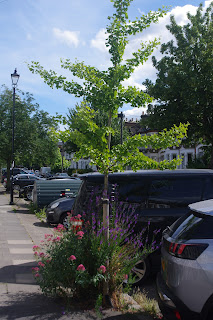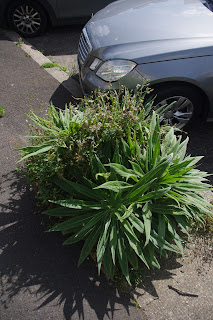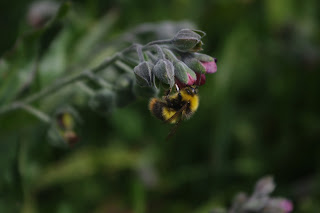Rambling on the longest day of the year. When I'm in Hitchin I sleep in an attic room that has a view over town to the hills beyond. The light woke me at 4am and I decided to walk those hills during the day. Sometimes referred to as the Chiltern Hills Extension they are one end of the chalk escarpment that stretches across southern England. My hike would be more or less along the lie of the land I looked at from my window at dawn.
By the by I've been doing some research on the Greater Ridgeway, said to the be the ancient coast to coast route between Lyme Regis in Dorset and Hunstanton in Norfolk. It's something I've pondered before but my interest was renewed when a friend gave me a book the other day which is a guide to walking all 363 miles of it. It is generally spoken of as not one but four trails: the Wessex Ridgeway, the Ridgeway, the Icknield Way and the Peddar's Way. The last follows a Roman road which may make it rather more recent than the others though the Romans often made use of existing tracks.
There is some debate whether the other sections are merely archaic or actually prehistoric. I am inclined to think that prehistoric man (and woman) did indeed walk this way. Looking at a topographic map of our island one can trace a route along high ground from the vicinity of Lyme Regis through Dorset, Wiltshire, Buckinghamshire, Bedfordshire and Hertfordshire before the terrain flattens out into East Anglia. The Icknield Way comes down from the hills just about where the photograph above was taken on the outskirts of the village of Pirton near Hitchin.
This was my starting point for today's walk via a local bus service. I lingered awhile on the village green drinking a cold can of juice from the village shop. A hiker passed by and I asked her if she was going far. She told me she was walking the Greater Ridgeway! Needless to say we had a long conversation and she gave me a lot of useful information. Coming only a few days after being given the book on the subject I think the fates must be trying to tell me something.
Like ancient man before me I headed up into the hills. In fact today's mission was to follow the line of hills I could see from the attic so I was on the Icknield Way only briefly before taking to other footpaths, bridleways and lanes.
I made a slight detour to wander round the hump that is Knocking Hoe, subject of a number of entries in this diary. I will have to pay it a longer visit sometime in the near future because a very fine selection of Orchids and other summer wildflowers are starting to bloom among the grasses.
I traversed the higher ground overlooking Hitchin as far as Offley. Reader, this is a village with two pubs and you will appreciate that I needed to take a break for water, carbohydrate and protein. In other words beer and peanuts. I feel sure that ancient man would have stopped in a tavern for a flagon of mead on a hot day like this. Refreshed I headed downhill and back into Hitchin.
Anyway I will stop rambling on the longest day of the year, sign off and watch the sun go down.















































